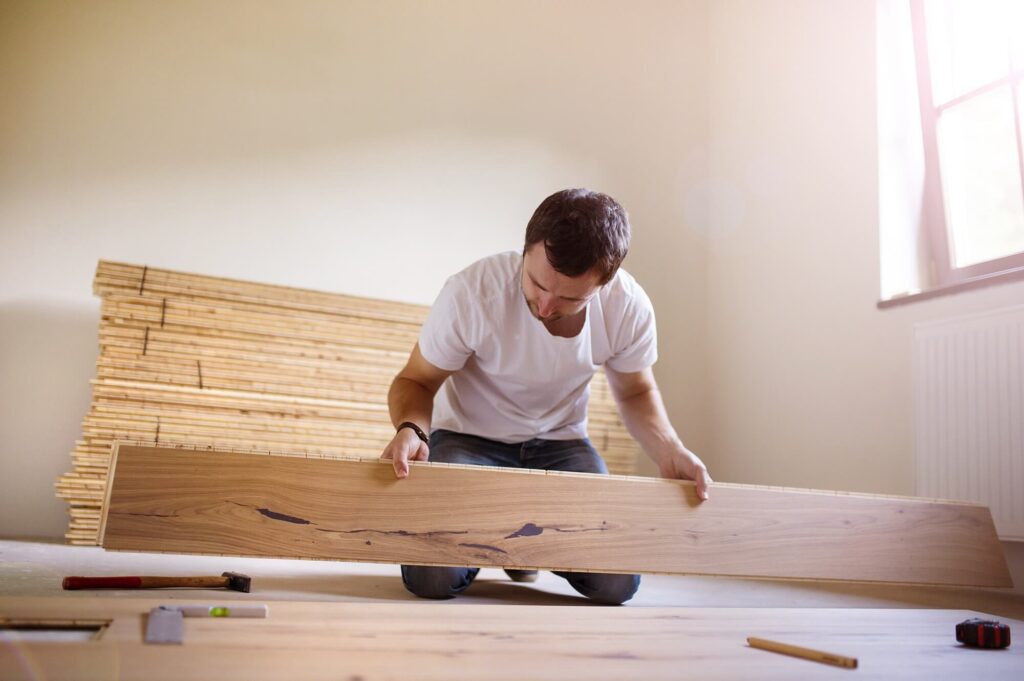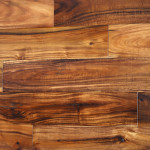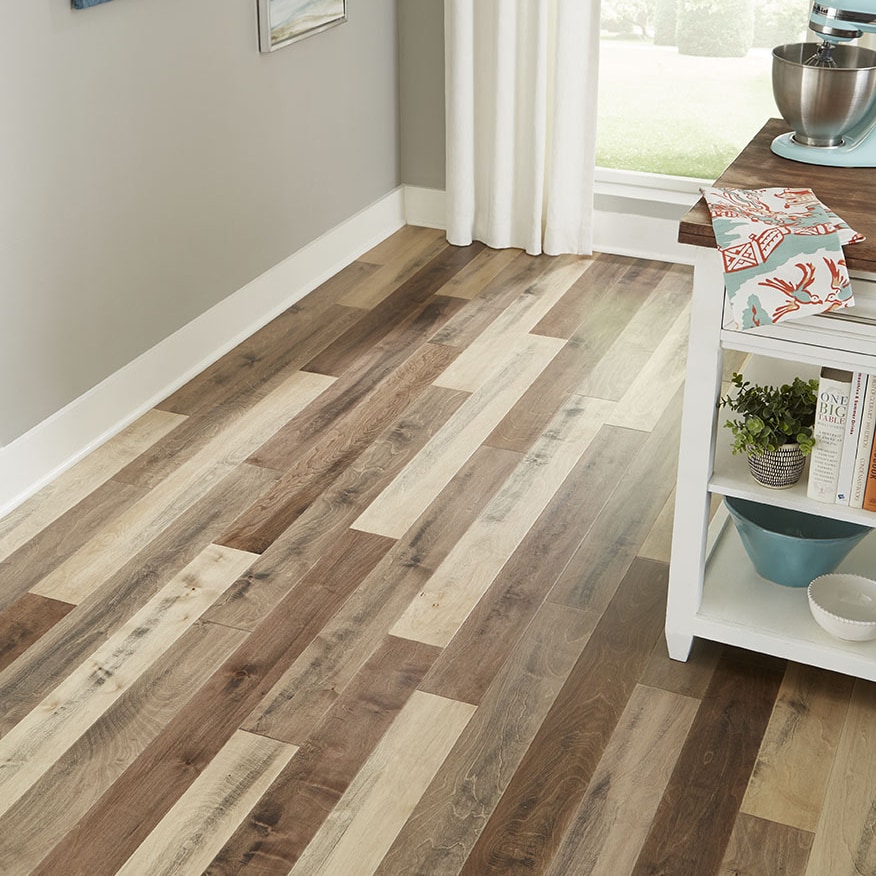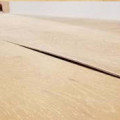Floor Racking: How to Lay Out Plank Flooring Before Installation
Natural hardwood, engineered wood and laminate flooring can all add elegant style and timeless beauty to your home. These materials also provide long-term durability, making them a sound choice for practically any part of your home.
Installing new flooring in your home isn’t as simple as measuring your space, ordering materials and putting down planks at random though. For a properly installed flooring, racking is an essential step you shouldn’t leave out. Use this guide to learn more about flooring racking and how to make use of this simple process before you begin your installation.

What is Floor Racking?
Floor racking can sound like a time-consuming task that should be left to professional installers only, right? The truth is that floor racking is quite simple and pretty much anybody can do it. If you can lift a plank of your chosen flooring material you can handle racking on your own.
That’s because floor racking is simply the process of laying out your flooring planks without fastening them with nails or glue. Doing this allows you to create varied patterns and mix and match different planks for a designer-inspired look you won’t get by randomly placing your planks at installation time. While you can do this with any flooring material, racking is a pretty standard procedure when you’re working with natural hardwood, engineered wood or laminate.
Not everybody takes the time to properly rack their floors. Skipping this step is one of the most common mistakes people make when installing flooring, and while avoiding it won’t necessarily result in damage, there’s a good chance your floors won’t look as good as they could have.
Why is Floor Racking Important?

A lot of people who are installing a floor in their homes wonder if floor racking is really necessary or if it’s just a step that will eat up valuable time. While it can easily add a few hours to your overall installation, floor racking is a vital first step when taking on a new flooring project.
Here are a few of the main reasons floor racking is so important.
Thorough Inspection
Floor racking allows you to inspect each plank as you take it out of the packaging. That means you get a look at each individual plank so you can check for defects. Once installed, defective wood won’t be covered under a standard warranty. Take the time to ensure you don’t have any defective planks before your installation. Racking early also allows you to get replacement planks before your installation is scheduled to begin.
Color Variation

Racking makes it easy to achieve proper color variation when installing flooring like engineered wood or natural hardwood. By racking your floors first, you can choose exactly what your flooring pattern will look like, giving your room and home more visual depth. With materials like wood, you can also blend light and dark planks or strategically place planks with more color variation.
Length Variation
You can mix and match plank lengths to create a smart design through racking. Varying plank lengths creates a designer-inspired look for your room. Racking also helps ensure that you don’t place all long planks together before switching to shorter planks, which will be very obvious once installed.
See the Full Picture

Racking allows you to view the floor from a standing position so you can see what your floors will look like once they’re permanently installed. This provides you with the opportunity to make changes for aesthetic reasons before nailing or gluing them down.
Understanding Acclimation and Moisture Content in Flooring Materials
Floor racking is a vital step that ensures you have high-quality wood, optimal color variation and appropriate plank lengths. Before you start laying out your floor though, allowing the wood to acclimate to the temperature and humidity of the installation location is critically important.
Why does acclimation matter so much? Consider the possibility that your flooring materials may have been shipped from a region with a climate much different than yours. Your new flooring materials may also have been in storage for some time before being shipped to you. That means they may shrink or expand slightly in your home.
In general, 48 to 72 hours is an ideal acclimation time for most materials, though a longer time generally won’t cause any harm at all in a climate controlled space. One great way to ensure your new flooring material is ready for installation is to unpack it on a Friday before beginning your installation on Monday or Tuesday. That leaves ample time for even sensitive materials like natural hardwood to acclimate to your space.
You don’t have to leave flooring acclimation to chance though. Another option is to use a moisture meter to make sure your flooring materials are ready for installation. Here’s how you can use a moisture meter to check your flooring materials before you begin the installation process.
Racking 101: A Quick Step-By-Step Guide

Racking doesn’t have to be complex. Here’s a quick step-by-step primer to help you get a handle on the basics.
- Inspect all flooring materials for damage and defects. Put aside any planks that are unfit for installation.
- Pull planks from different boxes to ensure varied tones and plank lengths. You can sort them into “like” groups to organize your materials.
- Allow your flooring materials proper time to acclimate to your home. Use a moisture meter to ensure your materials are ready for installation.
- Take time to plan your layout. Give yourself a day to ensure that you love your design before committing.
- Make sure you stagger joints correctly. You want to avoid weak spots that could lead to damage or the need for repairs down the road.
Ready to update the flooring in your home? We can help you find a range of materials like natural hardwood, engineered hardwood, laminate, vinyl flooring, porcelain and ceramic tile and more. Our trained representatives can also give you more information about racking your floors before installation so you can proceed with the installation knowing you’ll love the outcome.
Reach out today to take the first step toward new floors. We can also help you plan your building project if you’re creating your dream home from the ground up.




